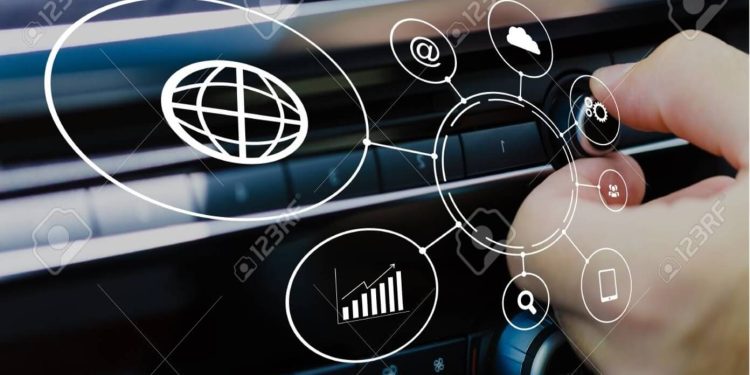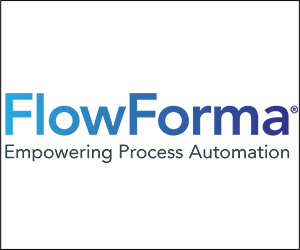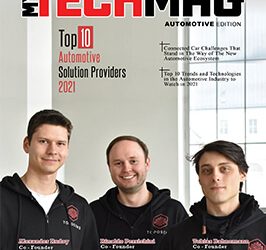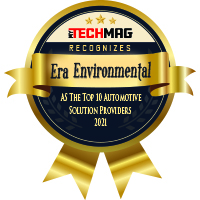The connected automotive industry is the most visible occurrence of IoT or Internet of Things today. The automotive devices are interconnected for eons, which by now pretends to be normalcy. Indeed, when it comes to connecting tech-enabled drivers, this segment has a wealthier and lengthier record of success than any other industry.
The embracement of IoT in an automotive sector, owing to its benefit, encourages the significant growth of the market. According to Meticulous Research, the automotive IoT market is foreseen to hit $541.73 billion by 2025, at a CAGR of 16.4% during the study period of 2019 to 2025. Moreover, a leading market research firm estimates there will be about 250 million connected vehicles on the roads by the end of 2020.
Global Demand for Connected Vehicles
The global market for connected vehicles has seen remarkable growth in recent years. Increasing demand for safer and convenient driving experience and government rules to lessen road accidents serves as the major factor driving the need for the IoT-based vehicle. For instance, the European Transportation Authority has mandated eCall. According to this mandate, the new cars should come with the eCall feature for emergency conditions.
Likewise, the Government of India has mandated connecting features for public transports under AIS-140 since 2018. This mandate plays a vital role in the assimilation of connected technologies in a passenger vehicle. These new regulations by the Government drive the growth for IoT assisted connected cars, by this means driving the growth of the global automotive IoT market.
At present, North America leads among all economies for an automotive IoT market, predominantly from the emerged economy of the United States and Canada. The North American market leads primarily due to the high awareness levels of the user and purchasing power for the new technology, including Nano-engineering.
Besides, the Asia-Pacific region is predicted to witness the rapid growth in this area. The high-speed networks, broadening internet connectivity, technological developments, and government interests in smart cities and smart traffic management systems are the major reasons driving the market growth in these developing economies.
Notable Developments in Automotive IoT Market
As technology is developing, connected cars are improving the lives of auto-makers and drivers, particularly with regards to electronic overhauls and convenience. Some of such most exceptional instances by automotive leaders are shared below.
- Audi’s wireless infotainment platform is the best example of IoT in the automotive field. This technology by Audi allows a driver and passengers to get traffic and parking-related information. Besides, it lets you access email and Twitter alongside navigation using the Google Street View and Earth.
- The EZtoTrack platform by Bransys helps the fleet managers in observing heaps of tractor-trailers on the road. The freight sensors screen a trailer’s assets while controlling just as checking the temperature for environment-sensitive conditions like vegetables and fruits. With electronic logging device options, it also provides low-power-consumption IoT sensors to track motion and the room temperature.
- Semi projects of Tesla is another fittest proof for automotive IoT. It includes electric truck Class 8 that drives on a single charge up to 500 miles. Using the latest IoT tools, the car is capable of dialing 911 if a driver is not responding.
Some of the top leaders in the automotive IoT market are – Audi AG, Robert Bosch GmbH, Ford Motor Company, General Motors (GM), and Google.
Connected Ecosystem Solves Urbanization Problems
The governments are initiating to develop smart cities that can be connected with smart cars to ease the urbanization problems. The Advanced driver-assistance systems (ADAS) in vehicles today, such as re-routing to evade traffic or automatic parking, forms the building blocks of IoT solutions for Vehicle-to-Everything (V2X) communication.
Vehicle-to-Everything (V2X) connectivity is an emerging key driver in connected technology, with an ability to improvise vehicle safety, mobility, and productivity of transportation systems. This smart communication framework is driven by automotive IoT sensors and, in this way, guarantees interconnectivity between vehicles, systems, framework, and pedestrians.
Exchange of information between the V2X module and sensors in the surrounding areas over low-latency, higher bandwidth, and reliable links allow vehicles to look at the driver’s range afar and alert the driver about traffic congestions, obstacles, and road safety in real-time. In short, autonomous cars will be able to decide based on the connected world’s V2X data in which they run.
Predictive Maintenance for Automotive Sector
Over time, Predictive maintenance (PdM) techniques in the automotive industry have evolved tremendously. From repairing the breakdowns to sensing the slightest possibility of failure, it measures all the mechanical data for precise predictions. As per the latest study, the predictive maintenance market is expected to expand 10X over by reaching a $1.3 Billion mark in 2027, making it the fastest-growing segment in the global automotive sector.
Players in this predictive maintenance market incorporate big data and IoT for the resultant diagnostic of the information that has to be transmitted to service centers and manufacturers to improve the outcome. This solution, based on automotive IoT, continually collects, records, monitors, transfers, and evaluates the data from in-vehicle sensors in sync with vehicle parts to track its functional metrics.
The data gathered by the vehicle’s sensor includes the speed, engine temperature, acceleration, fuel level, emissions, engine-oil, tire pressure, brake fluid level, and other aspects to evaluate it against the ideal limit of any given vehicle, and notify the drivers in case of discrepancy.
Upgraded Automotive Sales Experience
IoT is known to upgrade the sales experience by understanding the on-hand knowledge with the goal of responding rapidly to client demands. Sensors plugged into the car’s OBD port can retrieve GPS information, battery levels, and other diagnostics data, which in turn helps you in offering better customer experience.
For instance, when a customer requests to test-drive a specific car, the dealership can use the stored information from the sensor to identify the current position of the vehicle for speedy retrieval. Vehicle diagnostics and other information such as OBD codes and battery, allows the staff to learn ahead of time if any car needs to be serviced.
Check-in kiosks, using tablets at the entrance, prompt a sales executive with the data about an incoming customer’s request or search preferences so that they can determine the customer’s interest and anticipate their needs before the interaction begins. Besides, you can use this data to adjust the marketing efforts to fit the user’s needs.
Conclusion
The automotive industry is rapidly moving towards innovation in the form of connected solutions, which is making the vehicles modernized and intelligent. IoT-related automotive technologies are known to play a significant role in the global economy and are drawing the future map for this segment to follow. This futuristic trend will revolutionize this sector as a whole in the coming days. The road ahead is open now and lined with opportunity, so shift into this to reap the maximum benefit.








